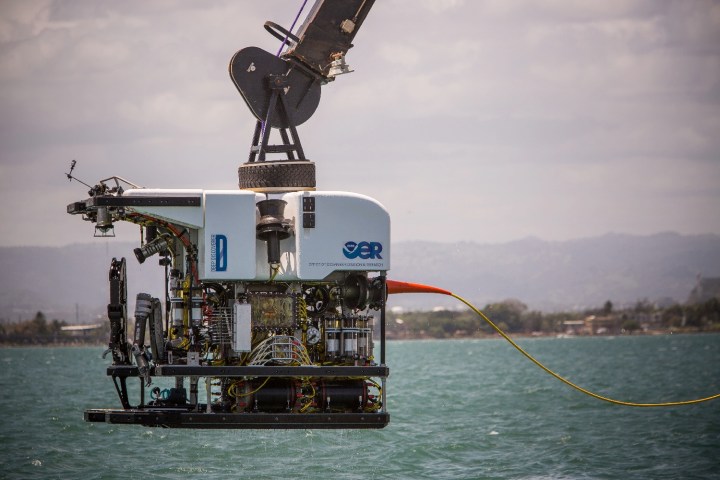
That’s the goal of two separate projects, both currently underway, and both of which are live-streaming high-def footage from the bottom of the deep sea via remotely operated robotic vehicles (ROVs).
The first such project is the Global Explorer submarine robot, which is vlogging its exploits 80 miles off the coast of Chesapeake Bay, the point at which the North American continental shelf meets the depths of the Atlantic Ocean. The mission ends today (although no doubt you’ll no doubt you can catch up via replays), but involved chronicling methane seeps on the U.S. Mid-Atlantic margin between Baltimore Canyon and Hatteras Canyon at water depths of between 400 and 1,600 meters.
The second project is the Okeanos Explorer, which runs through May 19, with the goal of gathering critical baseline information about poorly understood deepwater areas in the Pacific. This means near-daily ROV dives in American Samoa, the Jarvis Island, Kingman Reef, and Palmyra Atoll units of the Pacific Remote Islands Marine National Monument, before returning to Honolulu. Dives typically take place from about 8 a.m. to 5 p.m. SST (3 p.m. to 12 a.m. Eastern or 12 to 9 p.m. Pacific).
“What you’re seeing with both our expedition and the Global Explorer feed is a new telepresence model of conducting science,” David McKinnie, a senior adviser with NOAA’s Ocean Exploration Program, the organizers of the Okeanos Explorer project, told Digital Trends. “When you’re exploring in an unknown area, you can’t possibly have all the expertise on board that you might need. A telepresence model of exploration allows your science party to be largely on shore, but still available. Because they can see a high definition view of what’s happening on the seafloor through the eyes of our robot, and that can be transmitted in almost real time, with a delay of just several seconds, scientists can be as active on shore as they could be on a ship in terms of their participation.”
In addition to letting scientists guide the ROV from land, or annotate videos, McKinnie said that the other great advantage of the live-streaming technology is as a general interest educational tool for the viewing public: quite literally bringing cutting edge research into people’s homes.
“Even though I’ve been with this program for a while, the fact that you can get a high-definition video feed from 6,000 meters down to somebody’s desktop in a few seconds is something that I still find remarkable,” he said.
More projects like this please!
Editors' Recommendations
- Scientists revive 100-million-year-old microbes, insist it’s totally safe
- Activision Blizzard games taken down from Nvidia GeForce Now streaming service


